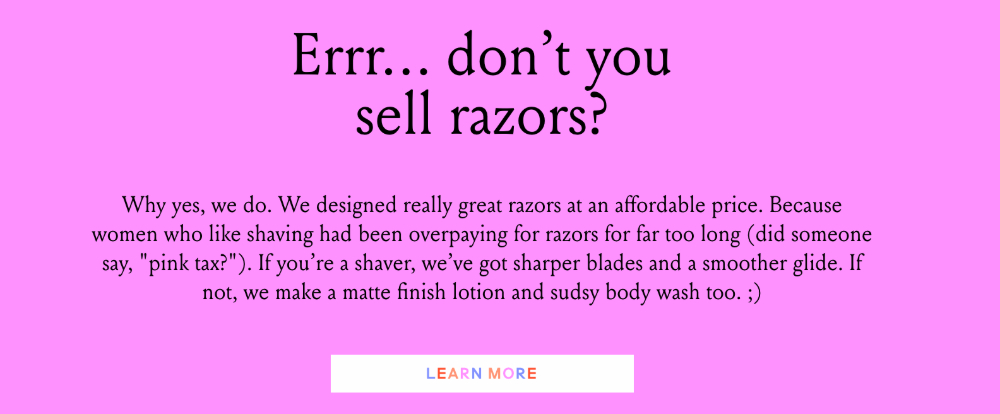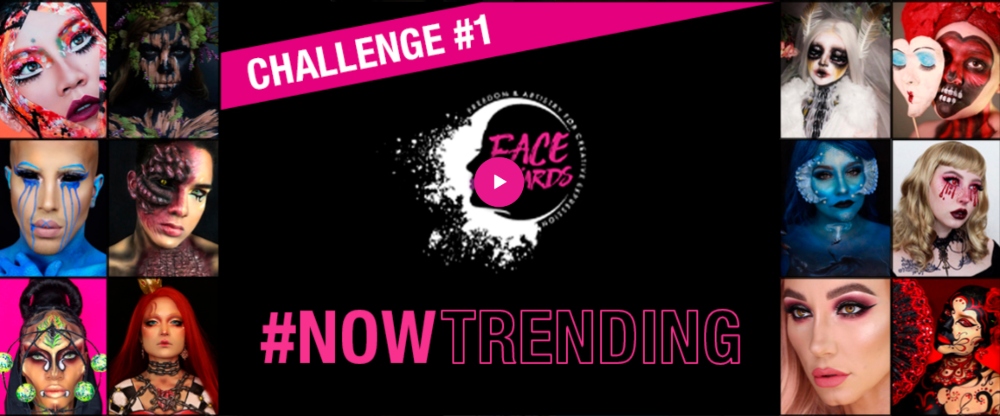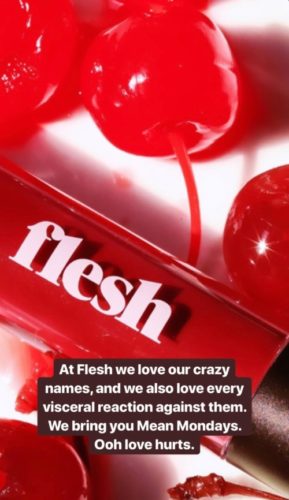In the world of influencer marketing, there are plenty of ways to run a campaign, from light-hearted, silly posts to more serious strategies. With the high volume of beauty brands online all trying to garner audience attention, though, it’s sometimes difficult to set yourself apart from the pack.
Luckily, there are still ways to mix things up. We’ve gathered some marketing campaign ideas as well as some examples of strategies other successful brands have used so you and your beauty brand can take your campaign to the next level.
A Flip-the-Status-Quo Campaign
Marketing for the beauty industry can be a huge struggle when it comes to breaking through all the noise online, especially if your brand seems the same as everyone else. To start showing your audience how you’re different, flip the status quo on its head and get influencers involved.
Take a look at Billie, a razor company targeting people who identify as women. Their recent campaign, Project Body Hair, encourages women to shave – or not – depending on whatever they feel is best for their body. Project Body Hair empowers women to make the choice for themselves, no matter what cultural standards may be.
One would think a razor company would want to encourage women to shave as much as possible. This new campaign flips that script. The result? A wildly loyal following and passionate word-of-mouth marketing.

Get started on flipping the status quo by publishing a Collab on Perlu! Flip a societal expectation on its head and ask influencers to share how they do – or don’t – use your product or how your product helps them flip the status quo in their own lives.
Ready to Flip the Status Quo?
A Next-Level Competition
Setting up an online competition or contest is a great way to get audiences involved with your brand. Make it engaging by giving the competition a theme, offering an awesome prize, and publishing a Collab on Perlu to get beauty influencers involved.
For example, NYX #faceawards: NYX hosts the Face Awards – a competition for the best out-of-the-box, over-the-top makeup look – every year. Who is allowed to participate? Anyone. Thousands of people, including beauty influencers.

By hosting this competition, NYX basically gets influencers to promote their product for free. While your brand may not be able to award users with $50,000 and a trip to Los Angeles like NYX, smaller prizes are still a great way to get influencers engaged and interested.
You could open your competition to any and all makeup looks, or you could zero in on a holiday (Christmas? Fourth of July? Pride Month?). Or how about a movie franchise that already has a huge following like Avengers or Harry Potter? The opportunities are endless!
A Twist on User-Generated Content (UGC)
 User-generated content is a great strategy for getting audiences to help you promote your brand while also empowering them to be creative and involved.
User-generated content is a great strategy for getting audiences to help you promote your brand while also empowering them to be creative and involved.
One way to take it to the next level is by adding a twist. For example, take Flesh Beauty’s Mean Mondays on Instagram. Flesh Beauty has tons of interesting names for their products, like Pucker for lipstick and Fleshpot for cheek and eye gloss – and people have a lot of opinions about it.
Instead of trying to get those comments removed, what does Flesh do? Every Monday, they take negative comments and make them into hilarious weekly Instagram Stories called Mean Mondays, inviting its audience to laugh with the brand at the mean comments.
Basically, you don’t have to wait for users to create UGC for you – you can just ask for it. Publish a Collab on Perlu asking influencers to share their best looks. Or add a twist and ask them to use your lip products on their eyelids or their highlighter as lipstick. Or follow Billie’s lead and ask beauty influencers how they feel empowered both with and without makeup. Then you can feature them in your social channels and/or blog. And if you get negative feedback? Instead of hiding it, find a way to weave it in!
Diversify
Take a look at your product photos, your blog posts, and social media accounts. Ask yourself, “How diverse is our brand?” Covergirl is a great example of a brand that has recognized the need for diversity in the beauty industry; they recently brought on Amy Deanna, a model and influencer with vitiligo.
Brands like Fenty Beauty, Milk and Glossier make a conscious effort to share photos from influencers of all different shapes, color, and abilities.
Why not create an influencer marketing campaign and publish a Perlu Collab that reaches out to influencers of different races, genders, sexual orientations, disabilities, and more? It’s a win-win. You diversify your brand while also uplifting and empowering people who aren’t often empowered by the beauty industry.
One important note, however, is that diversifying your brand needs to be something sincere, done with genuine care for your audience. Trying to create a diverse brand simply because it’s good for you can lead to tokenism. And your audience can see right through disingenuity. When trying to add diversity to your brand, do so authentically, from top-to-bottom.
You could also partner with an influencer internally to learn more about ways your brand might be falling short in the diversity area, and get creative input on how to improve from an outside source.
One-and-done Instagram posts have their place, of course. But the real ROI lies in creative, unique campaigns that capture and keep your audience’s attention for a long time.

